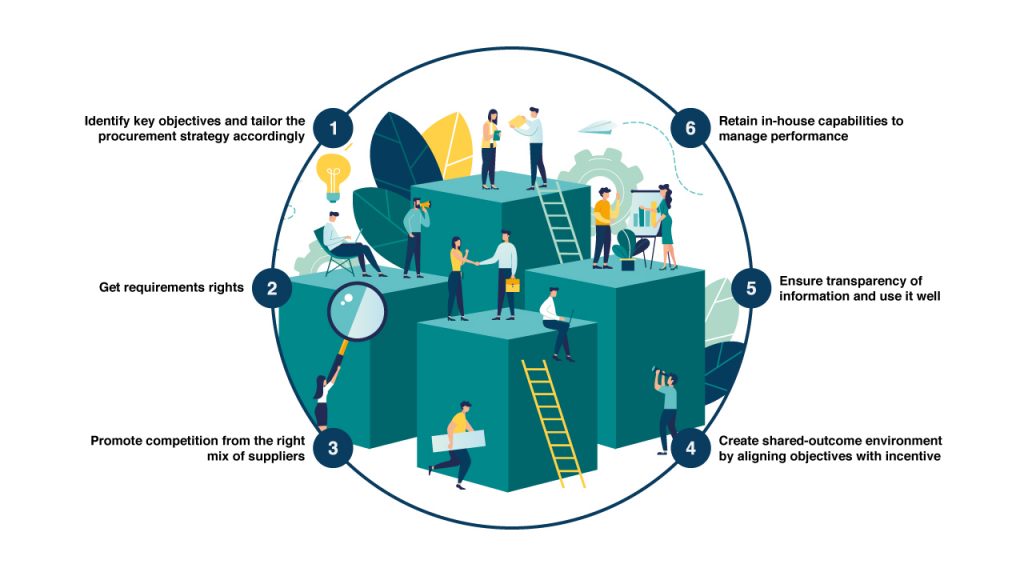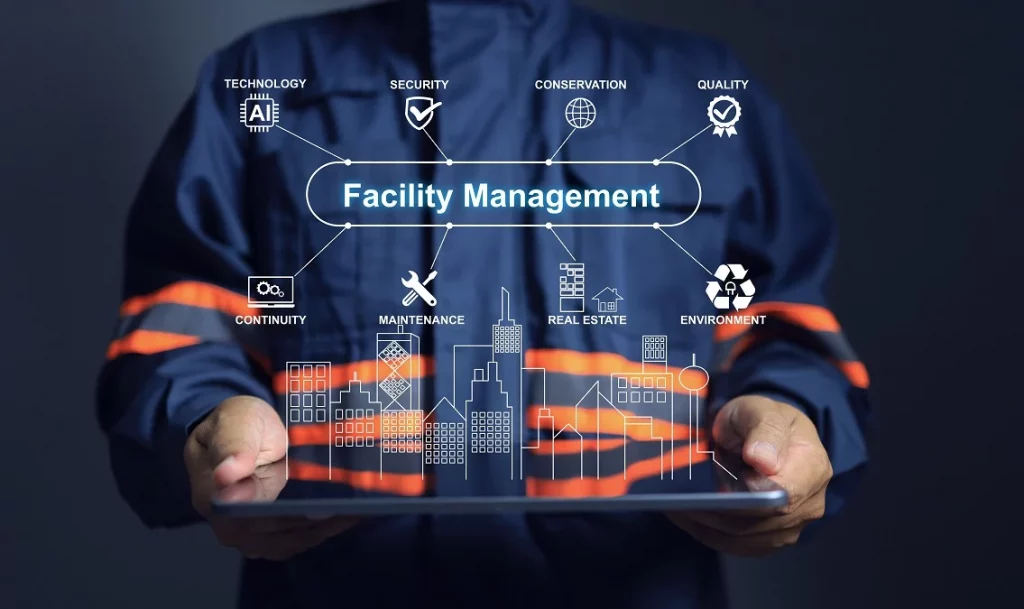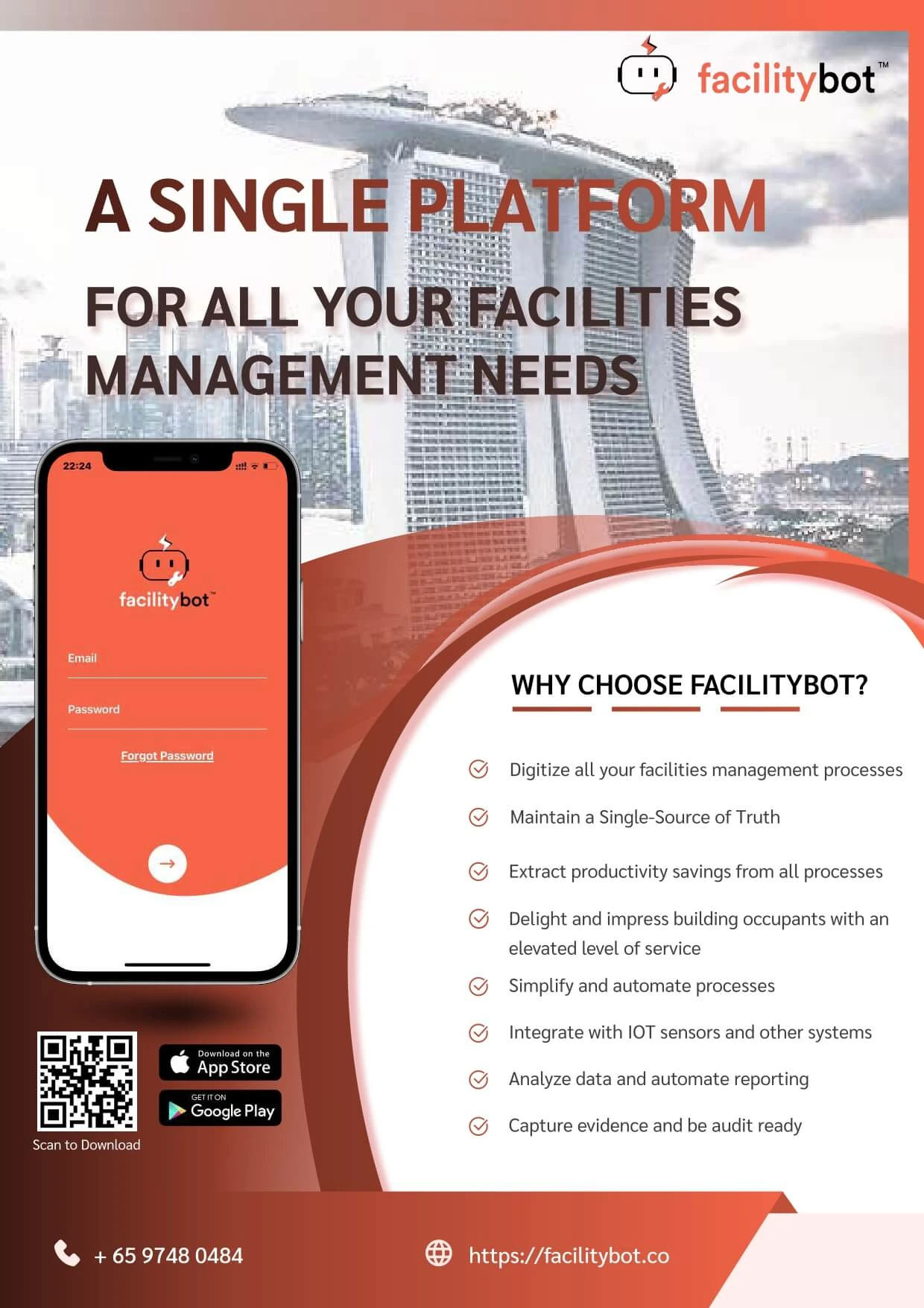Last updated on May 12th, 2025 at 06:57 pm
Procurement in facilities management has evolved from a back-office function into a strategic driver of value, resilience, and sustainability. As organizations navigate complex supply chains, economic uncertainty, and increasing environmental, social, and governance (ESG) expectations, Facilities Management Procurement (FMP) stands at the forefront of transformation.
This blog draws on findings from CBRE’s 2022 Facilities Management Procurement Survey, which engaged 40 global corporations across industries such as healthcare, technology, logistics, energy, and retail. The research identifies three dominant forces reshaping FMP strategies today: organizational design, supply chain inflation, and ESG imperatives.
The Shifting Priorities in Procurement in Facilities Management
Modern FM procurement professionals are no longer just focused on cost control. Their scope has expanded to include:

- Supporting corporate sustainability goals
- Managing operational risk
- Enabling agile, innovative service delivery
- Aligning with corporate real estate (CRE) strategy
According to CBRE, business leaders now recognize their real estate and FM portfolios as vital assets for cost optimization, culture building, and environmental performance. Consequently, FM procurement is becoming a strategic business partner.
Also, CBRE survey of 40 major corporations revealed that Facilities Management Procurement is now shaped by three critical strategic imperatives:
- Organizational design
- Supply chain inflation
- ESG imperatives
Let’s dive into each of these drivers to understand how they influence modern procurement strategies.
Organizational Design: Outsourcing as the Dominant Model
The structure of FM procurement teams varies across industries, but one trend is clear: outsourcing is the prevailing delivery model. According to CBRE’s findings, 58% of organizations fully outsource their FM services, while 25% out-task specific functions, and the rest self-perform.

Why has outsourcing become so popular?
- Innovation Access: Outsourcing providers bring access to the latest tools, technologies, and innovations through their relationships with top-tier suppliers. This enables faster implementation of new solutions across portfolios.
- Efficiency Gains: Outsourcing consolidates spend across categories, optimizing supply chain performance and vendor management.
- Risk Mitigation: Providers assume part of the risk, including supplier performance accountability, and offer agility in supplier replacement.
- Expertise: Partnering with specialists ensures in-depth category knowledge and cost-effective service delivery—particularly valuable in non-core areas like HVAC, energy management, or janitorial services.
This organizational shift allows FM procurement leaders to focus on strategic decision-making instead of tactical execution.
FM Procurement as a Strategic Business Partner
Facilities Management Procurement is increasingly viewed as a strategic business partner to Corporate Real Estate (CRE). While the average alignment score between FM procurement and CRE teams is currently 6 out of 10, 40% of respondents report high engagement levels.
To maximize impact, procurement leaders must move beyond traditional sourcing and tendering processes. Instead, they should bring deep subject-matter expertise to redesign services, reduce lifecycle costs, and drive long-term value.
One key area for improvement lies in capital and operational expenditure alignment. Currently, only 22% of companies report tight integration between FM CapEx and OpEx strategies. Aligning these functions is crucial for reducing total lifecycle costs and improving overall procurement outcomes.
Battling Supply Chain Inflation: Challenges and Responses
Supply chain inflation has emerged as a dominant challenge for FM procurement teams. Over the past two years, rising global shipping rates, labor shortages, and energy price volatility have disrupted service delivery and increased costs.

According to CBRE’s report:
- 70% of respondents reported a high impact of inflation on FM supply chains.
- The top three risks identified were supply disruption, labor shortages, and inflation.
To combat these pressures, organizations are deploying a mix of cost-mitigation strategies:
- Competitive Sourcing & Direct Negotiation: Over 90% of respondents are leveraging these traditional methods to contain costs.
- Service-Level Optimization: Companies are redefining performance standards and service levels to match evolving needs.
- Innovation and Smart Contracting: Some organizations are using dynamic contracts that limit or delay inflation-related adjustments.
- Standardization: By standardizing equipment and parts, companies reduce complexity and facilitate forward-buying of critical spares.
These practices help maintain budget stability while ensuring continuity of operations during supply chain volatility.
ESG Imperatives: From Compliance to Competitive Advantage
The importance of ESG in procurement in facilities management cannot be overstated. With mounting regulatory pressure and stakeholder expectations, FM procurement teams are increasingly responsible for aligning supplier relationships with ESG goals.
Scope 3 Emissions and Supplier Accountability
Indirect emissions (Scope 3)—which include those generated by suppliers—represent the largest portion of a company’s carbon footprint. This makes Facilities Management Procurement a key lever for achieving emissions reduction targets.
Key findings include:
- 70% of FM procurement teams are involved in supporting GHG emissions reductions.
- 72% of companies surveyed have defined sustainability goals, with many targeting net-zero by 2030.
- Most respondents include sustainability factors in supplier selection and management processes.
Supplier Management and Performance Tracking
Leading FM procurement teams are employing various tools to hold suppliers accountable for ESG and performance standards:
- KPI Scorecards: Used to track historical trends and identify areas for improvement.
- Performance-Based Contracts: Including incentives or penalties linked to service quality, sustainability, and innovation.
- Supplier Relationship Management (SRM): Programs designed to enhance collaboration and value creation across key partnerships.
Technology is playing a growing role here, enabling real-time visibility into supplier performance across metrics like diversity, carbon emissions, and compliance.
Supplier Diversity: Elevating DE&I in FM Supply Chains
Another critical aspect of ESG is supplier diversity. Facilities management categories such as cleaning, maintenance, and landscaping offer rich opportunities to engage with diverse suppliers. CBRE’s report shows that FM procurement has made more progress in growing diverse-supplier spend than other procurement categories.
Why does this matter?
- Diverse suppliers often bring agility, innovation, and deep community connections.
- Expanding DE&I efforts improves brand reputation and helps meet stakeholder expectations.
- Supplier diversity contributes to economic equity and aligns with broader social responsibility goals.
FM procurement leaders should continue building programs that attract, develop, and retain diverse suppliers, using data and benchmarks to track progress.
What’s Next for Facilities Management Procurement?
As Facilities Management Procurement continues to mature, procurement teams must embrace a future-focused approach that emphasizes:
- Collaboration: Strengthen ties with CRE, sustainability, and finance teams to align on shared objectives.
- Technology: Leverage data analytics and automation for smarter sourcing, benchmarking, and supplier evaluation.
- Sustainability Leadership: Take proactive ownership of Scope 3 emissions and ESG reporting.
- Resilience: Build flexible, diverse supplier networks that can weather market shocks and environmental disruptions.
- Innovation: Stay ahead of trends in smart buildings, IoT, and predictive maintenance to unlock additional value.
By adopting these strategies, procurement teams can transform FM from a cost center into a source of competitive advantage.
Empowering Smarter Procurement with Facility Bot
To fully realize the potential of modern procurement strategies, organizations need intelligent digital tools that streamline operations, enhance transparency, and improve supplier collaboration. Facility Bot, a leading smart facilities management platform, empowers procurement teams by digitizing maintenance requests, automating vendor workflows, and centralizing data for better decision-making. As the best facility management system in Singapore, Facility Bot supports ESG initiatives, improves service level tracking, and integrates seamlessly with existing enterprise systems—making it a powerful ally for forward-thinking FM procurement teams aiming to drive efficiency and sustainability.
Final Thoughts
The evolution of procurement in facilities management signals a broader transformation in how organizations approach operational excellence. No longer a back-office function, Facilities Management Procurement now stands at the intersection of cost control, sustainability, innovation, and risk mitigation.
Companies that invest in modern procurement capabilities, leverage outsourcing partners strategically, and prioritize ESG alignment will be best positioned to thrive in the new landscape.
Whether you’re rethinking your sourcing model or evaluating new supplier partners, the time to act is now. The future of FM procurement is not just about managing spend—it’s about shaping a more sustainable, efficient, and resilient built environment.




